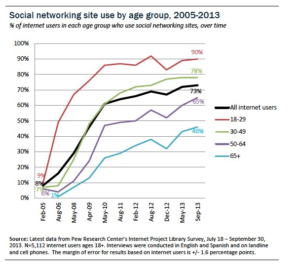Determine Your Audience
Netflix famously offered (and awarded) a US $1 million bounty for an algorithm that would improve their recommendations for their users. Knowing your customers is big business, and the cornerstone of any good content marketing strategy is the buyer persona.
Don’t just guess at who might be your customer, use data to make those determinations. Data analytics tell you where your visitors come from, and what they’re looking for. Generating leads through email campaigns lets you refine your appeals, by telling you what sort of people are responsive to a given channel. And it’s a good idea to monitor social media to see what customers are saying about you and your industry. This will help you address pain points and shape a good strategy.
Use Analytics to Drive Conversion
Analytics are a simultaneously useful and often-underused tool for driving conversion. The first chance you have to drive conversion is gleaned from the search terms that send visitors to your site. A good content marketing strategy will bring customers to your site, and Google analytics will tell you what they searched for to get there. A savvy strategy is to avoid the highly competitive keywords and focus on the second-tier ones. To use a crude example, a shoe company in Norwich would focus on raising its ranking for “Norwich shoes” rather than “shoe store.”
To get a bit deeper into analytics, a company seeking to increase conversion can look at the analytics over its site and see where visitors spend their time, and where they bounce. If a lot of customers are spending time on one section and then leaving, it’s a good indicator that something’s amiss on that page. There might be a broken link, or the user interface might be too confusing, or it may be something conceptual, like particularly uncompelling prose. Once you’ve used data analytics to identify a trouble spot, you can fix it, and keep your online visitors from bouncing. Turn a page from which visitors bounce into one that converts them into customers.
Inform Your Logic
Your content marketing strategy should have well-defined buyer persona—buyers who have similarities, and are looking for a solution to a common need. Demographic information comes into play in several ways here:
Data crafting content: Though you rely on your creativity for creating content, use data to inform that content. Seemingly ancillary information about your intended audience can shape the direction of your strategy. Is there a story in the news that’s particularly relevant to the population you’re trying to reach? Does that group have unique concerns? All of this data will augment a good content plan.
Data determining channels: Your prospective buyers most likely fit into general demographic brackets. Use this information to determine how you get your word out. When pushing a content marketing plan across social media platforms, pay close attention to managing those channels with demographic data in mind. A product or service aimed at a younger user would be better served by Pinterest or Twitter than by Facebook. Similarly, there are different expectations that attend each site: a Twitter user expects responses, whereas a Pinterest user does not.
The Bottom Line
The flow of online data is never-ending, and it’s important to narrow down all that information to find what’s important for you business. These are 3 easy ways you can get Big Data to work for your company. Do you have another tactic that works for your firm?




